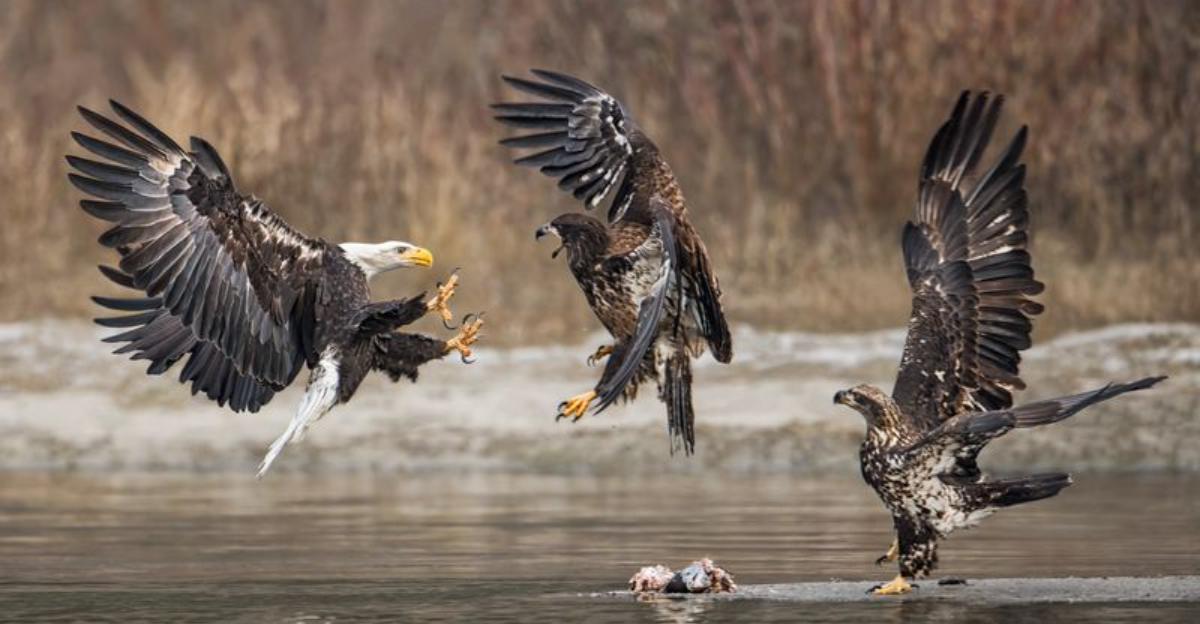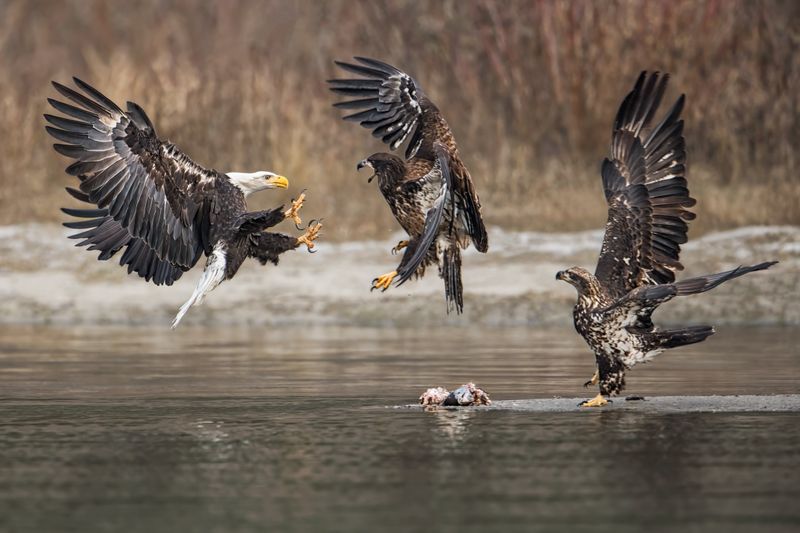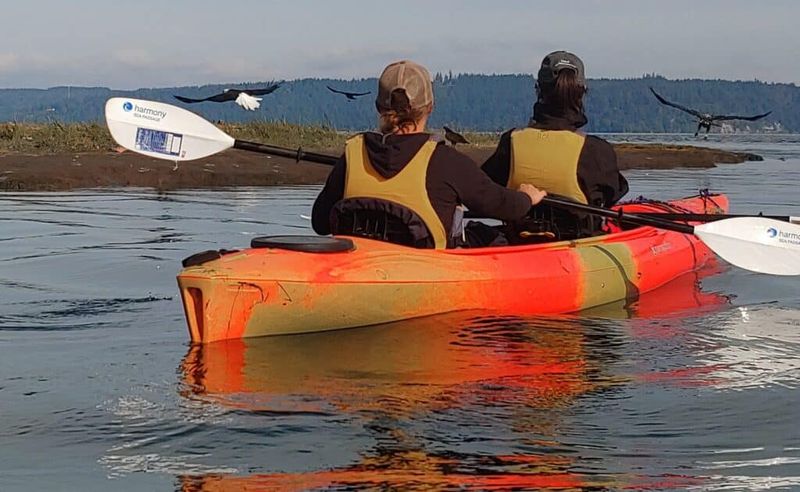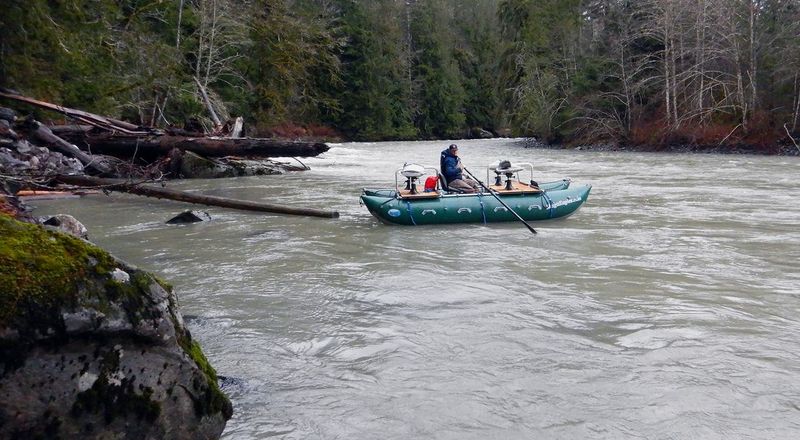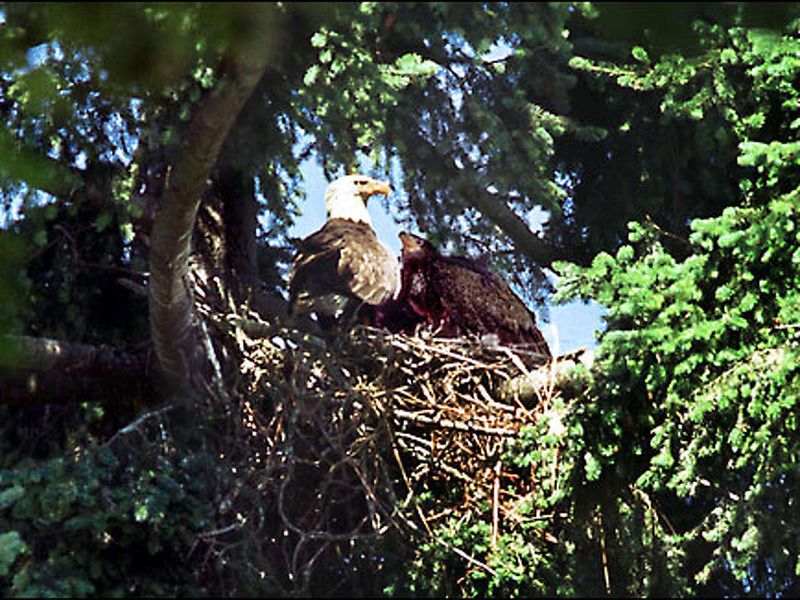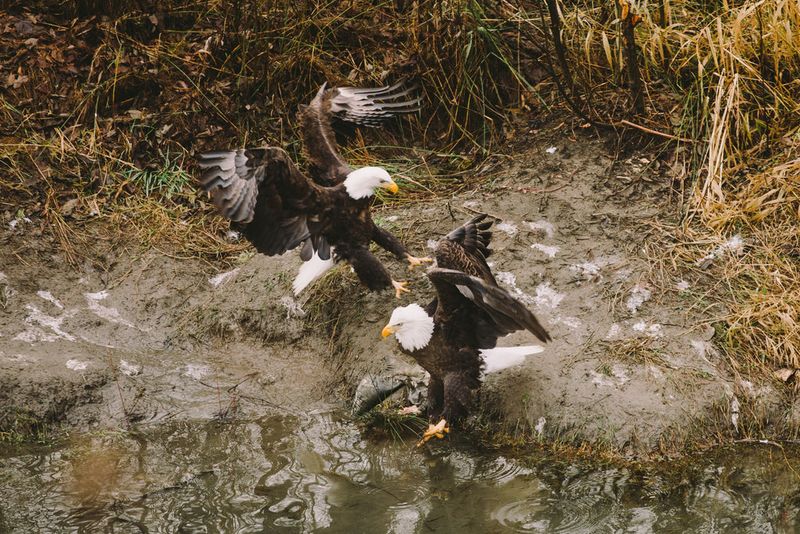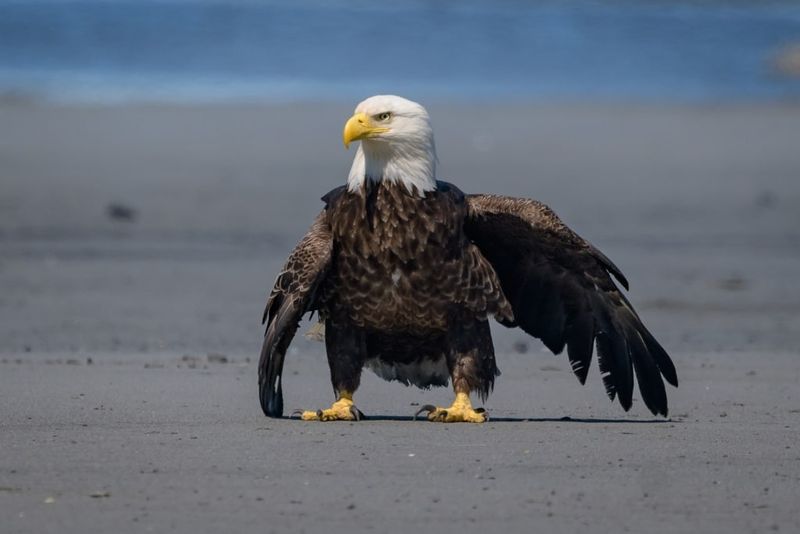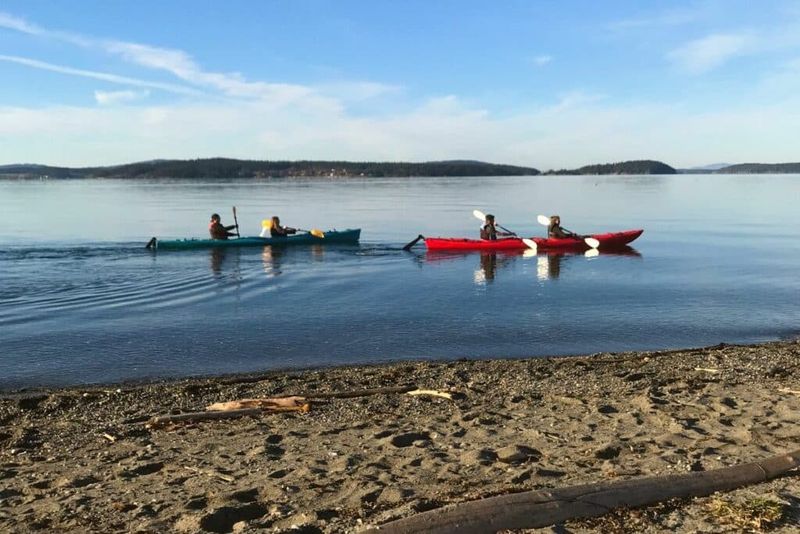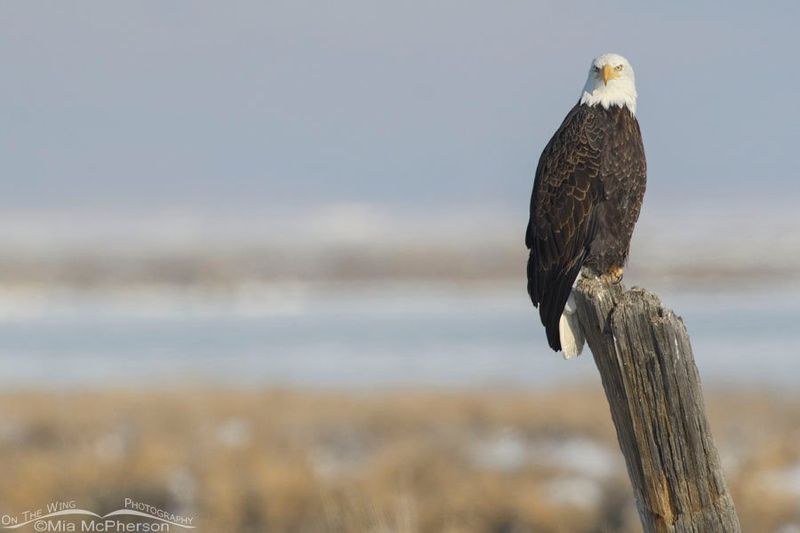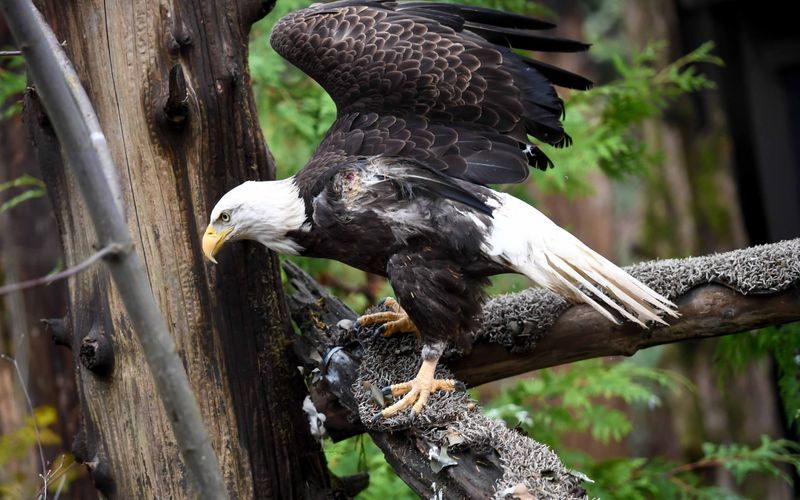There’s nothing quite like locking eyes with a bald eagle in the wild—majestic, powerful, and utterly unforgettable. In Washington State, that moment isn’t just possible—it’s everywhere.
Each winter, these iconic birds flood the skies, rivers, and coastlines in breathtaking numbers.
Whether you’re gliding silently in a kayak or sipping cocoa on a river raft while eagles dive just feet away, these are the kinds of encounters that stay with you for life.
If you’ve ever dreamed of seeing a bald eagle in action—this is your sign. Here are 10 jaw-dropping ways to experience their magic up close.
1. Guided Walks At Skagit River Bald Eagle Interpretive Center
Last winter, I joined a morning walk led by a retired biologist who knew every eagle nest in the area by name! The Center’s guided tours take you through prime eagle territory where spotting these birds is practically guaranteed from December through February.
Volunteers equipped us with binoculars and shared fascinating eagle facts I’d never heard before. Did you know eagles can spot a fish from nearly a mile away? Crazy!
The trails are easy enough for the whole family, and watching eagles swoop down to snatch salmon from the river left my kids speechless – a rare accomplishment indeed! The small donation they request is totally worth the unforgettable experience.
2. Float The Skagit River On An Eagle-Watching Boat Tour
“Hold onto your cameras!” our captain shouted as we rounded the bend to find seven – SEVEN! – bald eagles perched on a single fallen tree. Floating silently along the Skagit River brings you eye-to-eye with these magnificent birds in their natural habitat.
The heated boats keep you cozy even on the chilliest January mornings. Our guide spotted eagles that were completely invisible to my untrained eyes, pointing out juveniles (the brown ones!) and adults alike.
Bring a zoom lens if you have one – I captured frame-worthy shots without fancy equipment, but the photography buffs onboard were getting National Geographic-worthy images. The peaceful river journey between eagle sightings was almost as magical as the birds themselves.
3. Kayak Among Eagles On Hood Canal
My arms were tired but my spirit soared as I paddled quietly through the misty waters of Hood Canal. A bald eagle swooped so close overhead I could hear its wings cutting through the air!
Guided kayak tours here put you at water level with feeding eagles – a perspective you simply can’t get any other way. The guides are eagle experts who know exactly where these birds hunt and rest. They’ll even help you capture amazing photos while keeping your balance in the kayak.
The Hood Canal’s pristine waters reflect the surrounding Olympic Mountains, creating a backdrop that makes every eagle sighting even more dramatic. Pack waterproof layers though – I learned the hard way that splashes and winter drizzle are part of the adventure!
4. Thrilling Eagle Rafting Adventures On The Nooksack River
“Eagles at two o’clock!” our guide yelled over the gentle splash of rapids. Seconds later, we watched in awe as a massive bald eagle plucked a salmon from the river just yards from our raft!
The Nooksack River offers a unique combination of mild winter rafting and prime eagle habitat. Unlike peaceful floating tours, these trips deliver an adrenaline kick alongside incredible wildlife viewing. Our guide knew exactly which river bends harbored the most active eagle feeding grounds.
Between eagle sightings, we navigated gentle class I-II rapids – just exciting enough to be fun without being scary. The hot chocolate break halfway through was a welcome warm-up on our December trip. I counted 24 eagles in just three hours – my personal Washington record!
5. All-Inclusive Bald Eagles Nesting Area Tour From Seattle
Sometimes splurging is worth it! I treated my eagle-obsessed nephew to this tour last February, and the look on his face when we spotted our first nesting pair was worth every penny.
These full-day excursions handle everything – transportation from Seattle, expert guides, spotting scopes, lunch, and even hot drinks. We visited three different eagle habitats, including a nesting area where we watched parents taking turns bringing fish to their eaglets.
The small group size (just 8 of us) meant everyone got plenty of time with the high-powered scopes. Our guide, a retired wildlife biologist, shared fascinating insights about eagle behavior that even my well-read nephew didn’t know. The comfortable van between locations meant we stayed warm despite the February chill.
6. Solo Eagle Watching Adventures In Skagit Valley
Sometimes the most magical eagle encounters happen when you’re all alone. My most memorable Washington eagle experience came on a quiet Tuesday morning when I pulled over at a random Skagit Valley turnout and counted 18 eagles fishing in the early light!
The Skagit Valley has numerous public viewing areas perfect for DIY eagle watching. Download the Eagle Watcher’s Guide from the Forest Service website before you go – it shows the best pullouts and viewing platforms, plus what time of day eagles are most active at each spot.
Pack binoculars, a thermos of something hot, and your patience. I’ve found early mornings (7-9am) offer the most active eagle feeding times. The Rockport area has several excellent roadside viewing areas where you can stay cozy in your car while watching these magnificent birds.
7. Eagle Island Marine State Park Wildlife Expedition
“I’ve never seen an island literally covered in eagles before!” I exclaimed to my equally astonished wife. Eagle Island isn’t just named for these birds – it’s absolutely teeming with them during winter months.
This tiny marine state park is accessible only by boat, which means hiring a water taxi or joining a guided tour. The effort is richly rewarded with scenes straight from a wildlife documentary. Eagles perch on nearly every suitable tree, creating a surreal forest of white-headed sentinels.
The island’s protected status means eagles feel secure enough to hunt, nest and display natural behaviors rarely seen in more accessible locations. Bring a good camera with weather protection – my first visit coincided with typical Pacific Northwest drizzle, but the eagles seemed completely unbothered as they soared through the misty air.
8. Birdwatching Paradise At Spencer Spit State Park
The morning fog was just lifting when I spotted it – a massive bald eagle perched atop a weathered driftwood log, surveying the beach like royalty overlooking its domain. Spencer Spit State Park on Lopez Island offers some of the most accessible eagle viewing in the San Juan archipelago.
The park’s unique geography creates a perfect eagle hunting ground where shallow waters trap fish during tide changes. I’ve counted up to a dozen eagles during a single morning walk along the beach trails! The park’s campground makes this an ideal overnight destination for serious eagle enthusiasts.
Pack a lunch and stake out a spot on the driftwood-strewn beach. Eagles are most active here during morning hours when they hunt the shallow waters. The ferry ride to Lopez Island adds another layer of adventure to this unforgettable eagle experience.
9. San Juan Islands Wildlife Refuge Boat Expedition
“Whales on the port side, eagles starboard!” our captain announced, sending everyone scrambling across the deck. Only in the San Juans can you experience this incredible wildlife double-feature!
These specialized wildlife tours circle the protected refuge islands where eagles nest in stunning numbers. Our naturalist guide explained how these islands provide perfect habitat for both nesting and hunting. We watched spellbound as eagles performed aerial courtship displays, locking talons mid-air and spiraling downward in a heart-stopping free-fall.
The heated cabin kept us comfortable between wildlife sightings, though I rarely went inside – too afraid I’d miss something amazing! These tours run year-round, but winter brings the highest eagle concentrations. Bonus: we also spotted sea lions, harbor seals, and a family of river otters playing along a rocky shoreline.
10. Up-Close Encounters At Northwest Trek Wildlife Park
I stood transfixed as the rehabilitated bald eagle fixed me with its piercing gaze just feet away. There’s something profoundly moving about these close encounters that wild viewing can’t match.
Northwest Trek’s eagle habitat houses birds that can’t survive in the wild due to injuries. The daily keeper talks reveal fascinating insights into eagle behavior and conservation. I learned that the impressive female eagle we were observing had survived being shot, and though she couldn’t fly properly anymore, she helped educate thousands about eagle protection.
While this isn’t a wild eagle experience, it offers guaranteed sightings and photography opportunities impossible to get elsewhere. The park’s naturalists answer every question with expert knowledge and obvious passion. For families with young children or visitors with limited mobility, this controlled setting provides an eagle experience everyone can enjoy.
